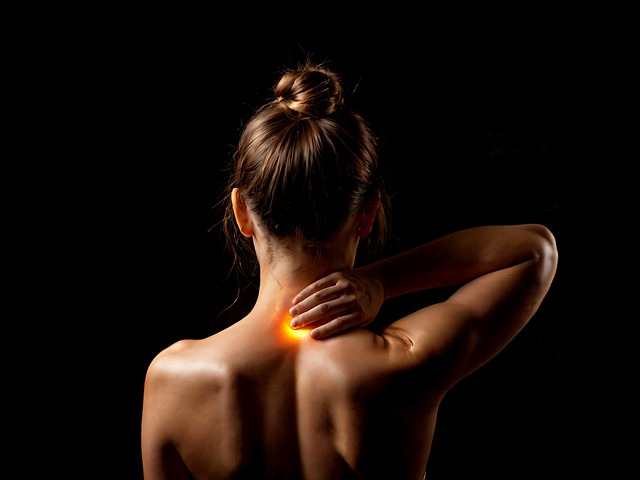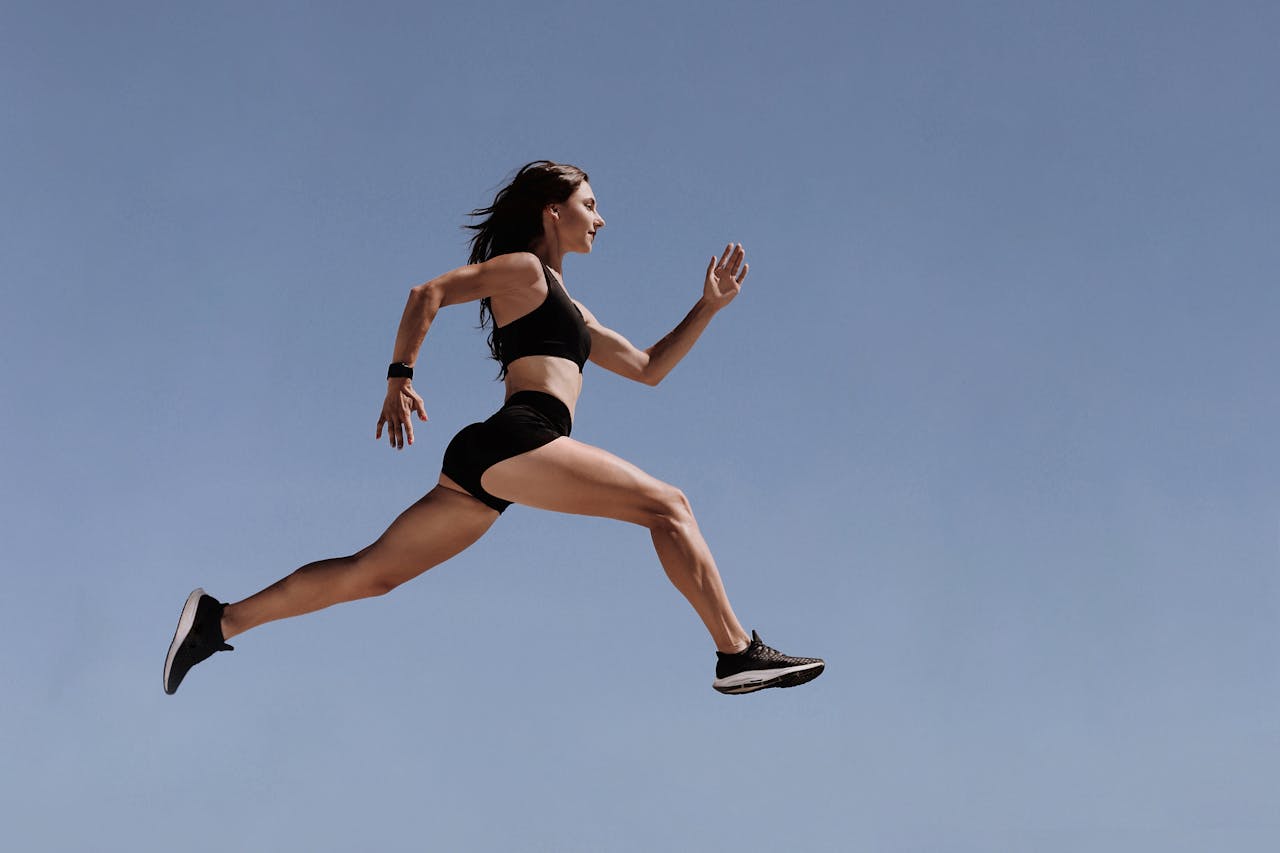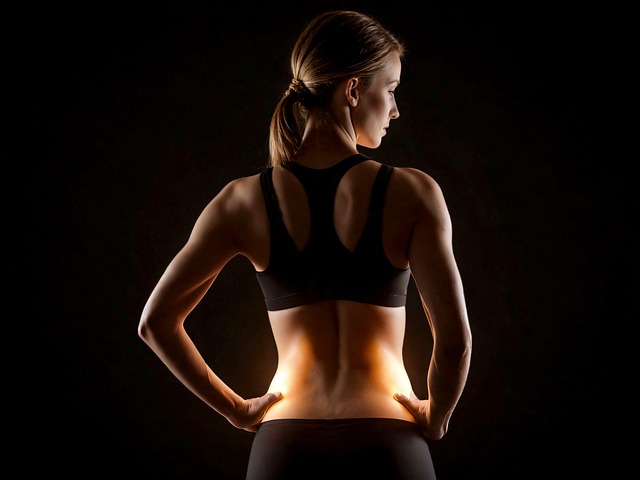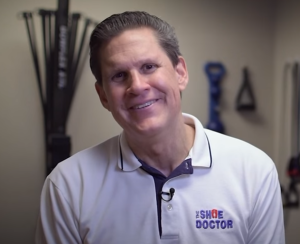Standing all day can contribute to both back and knee pain by applying constant pressure and tension in muscles, joints, and ligaments. Standing for long periods causes muscles to work harder to support the body, which stresses the spine and lower limbs. Sitting healthy your lower back and knees don’t get a chance to build up pressure until it causes pain and swelling. Workplace floors with minimal padding or give simply contribute to it, exacerbating pain for others. Folks in occupations that demand incessant standing, such as retail or healthcare, experience these effects most. To see why standing all day is bad for your back and knees, it helps to understand how parts of your body are stressed in daily life.
Key Takeaways
- Standing all day compresses the spine and overloads the knee joints, putting you in harm’s way for chronic pain and joint degeneration. Ergonomics and supportive surfaces can reduce these risks.
- These are all common side effects of standing for extended periods, which can be alleviated by incorporating frequent movement, stretching, and compression stockings into your routine.
- Everyone is different – body type, age, health condition – which can play into pain levels and susceptibility, so it’s important to customize ergonomic solutions and preventive strategies to the individual.
- Environmental factors, such as hard floors and poor shoes, can compound pain. Fatigue mats and the right shoes with arch support make a world of difference.
- Active standing methods, breaks, and supportive equipment like insoles and lumbar supports can help you stay comfortable and minimize fatigue while standing for long periods.
- Otherwise, you’re going to end up with back and knee pain that comes from standing all day.

The Biomechanics of Prolonged Standing
Standing for hours upon hours applies continuous stress to the body’s support system. This can alter the biomechanics of the spine, muscles, joints and blood vessels. Over time, this can cause pain, fatigue, and other health risks. The sections below decompose the key biomechanical implications of prolonged standing.
Spinal Compression
All-day standing introduces a consistent downward compressive force on the spine, which may pinch the vertebrae tighter together. This load can displace the natural curve of the spine, rendering it more prone to falling out of line. If you stand with bad posture, like leaning forward or slouching, spinal stress increases and so does the likelihood of developing chronic back pain. Over time, the discs in between these bones can dehydrate, flatten or bulge, potentially even herniating and causing stabs of pain. To protect your spine, it can assist to wear supportive shoes, frequently shift your posture, or stand on an inclined mat. Studies show that standing on a 16-degree decline surface reduces back pain by nearly 60%.
Muscle Fatigue
Back and leg muscles work non-stop to keep the body upright through long shifts, which drains their energy and can lead to injury. Symptoms are burning, cramping, and heaviness in the thighs or low back. Stretch gently during breaks to keep muscles supple. Even a few minutes of sitting every hour can significantly reduce fatigue and discomfort.
Joint Overload
The knees absorb a significant portion of the body’s weight during standing, potentially taxing the joint over time and increasing the likelihood of discomfort. Well padded, arch supporting shoes relieve a bit of this burden. Too much joint stress can result in osteoarthritis, too, with wear and tear accumulating over years. Altering work height, anti-fatigue mats, or frequently changing stance can safeguard the knees.
Reduced Blood Flow
When you stand still, it’s more difficult for blood to return from your legs, which can lead them to swell or your feet to become tired or painful. Movement breaks — walking or weight-shifting — can get blood moving better. Compression stockings can provide circulation support. Reminding yourself to move every 30 minutes or so can reduce these problems.
Nerve Impingement
Standing in one spot or with poor posture can pinch nerves which causes tingling, numbness or weakness running down the legs. These symptoms demonstrate that nerves are being stressed. Small ergonomic modifications — standing with feet hip-width or with a footrest — relieve nerve compression. Stretching the hips and lower back can do wonders.
Key Risk | Recommendation |
Spinal compression | Use footrests, alternate surfaces, support posture |
Muscle fatigue | Take sitting breaks, stretch, avoid fixed positions |
Joint overload | Wear padded shoes, use mats, change stance often |
Reduced blood flow | Move every 30 min, use compression stockings |
Nerve impingement | Adjust posture, use ergonomic aids, stretch |
Why You Feel Pain Differently
Pain from standing all day is not the same for everyone. Physical differences, age, health, even experiences — all factor in. Genetics, gender, culture and emotional state can alter how pain is perceived and communicated. Owing to these considerations, approaches to avoid or cope with pain need to be personalized.
Your Body Type
All of us do not stand equal. Body type alters the way force distributes over joints and muscles. A slender, long-legged individual may stress their lumbar region, whereas a husky individual might feel it more in their knees. How your weight is distributed—such as having flat feet or high arches—can exacerbate pressure points, causing knee, hip or back pain. Women, on the other hand, said it hurts more for musculoskeletal problems—which can be attributed to variations in anatomy, hormones and physical demand.
Ergonomic setups aren’t cookie-cutter. Standing desks, ergonomic shoes and anti-fatigue mats assist, but only if they fit an individual’s stature. For instance, an individual with wide hips might require a distinct chair or shoe support than someone with narrow hips. Workplaces should provide flexibility—think height-adjustable standing desks and arch-supporting floor pads—to help everyone feel at ease.
Your Age
Muscles weaken and joints stiffen with age. So older adults might experience pain more quickly and intensely when standing long shifts. They shed some of the soft muscle that cushions pressure, causing pain to feel more acute and endure. Older workers typically require more breaks and softer floors to stand on.
Age-specific workouts—such as light stretching, weightlifting or balance exercises—can maintain muscular and joint strength. Basic exercises, like calf raises or squats, cultivate standing stamina. Ergonomic modifications, such as raised work surfaces to minimize bending, might be necessary too.
Your Health
Health has a tremendous part in pain. Chronic ailments such as arthritis, diabetes or old wounds exacerbate standing pain and prolong its duration. Obesity adds additional load to joints, particularly the knees and back, accelerating their degeneration. Emotional factors compound the issue—stress, anxiety, and depression can make pain seem stronger. Even hormones, such as those fluctuating during menstruation or menopause, shift pain sensitivity.
Controlling your illness is important. Taking breaks, wearing good shoes, and seeking medical guidance mitigate pain risk. These preventive measures—exercise, weight management, check-ups—keep pain from getting worse. Genetics, trauma history, and attention span influence how much pain is experienced and paid attention to.
The Unseen Saboteurs
There’s more to standing all day than just, well, standing, and it activates a layer of unseen saboteurs that subtly orchestrate suffering under the surface. Little environmental minutia, forgotten tools, and rituals on the job can all contribute to the stress on the back, knees, and feet. Each of these unseen saboteurs can exacerbate health problems and decrease the quality of your work day.
Hard Surfaces
Frequent standing on hard floors such as concrete or tile aggravates pain in the feet, knees and lower back. These surfaces are without the give required to absorb impact, causing your body to work harder to stabilize itself. Over time it creates joint stress and increased muscle tension. They found that edema of legs ramped up by anywhere between 10.2 and 220.3 ml after only 3 hours of standing per day. Low-tech solutions — like fatigue mats at workstations — can help soften that blow, cushioning feet and reducing swelling. Opting for softer flooring materials like rubber or cork in work environments helps provide additional relief. If you can’t change the floor, however, personal anti-fatigue mats or insoles are a good step to help mitigate the pain and discomfort.
Poor Footwear
Wearing shoes without arch support can cause back and knee pain, especially if you stand on your feet for many hours. Shoes without arch support or cushioning compel your body into awkward stances, consequently straining your joints and muscles. This can ultimately lead to chronic pain and exhaustion. Supportive shoes, with a hard midsole and arch support, can maintain the feet in a neutral position and reduce strain on knees and back. For those who are on their feet most of the day, SEEK SHOES with THICK SOLES and ample toe room. Shoe inserts or orthotics offer additional cushioning and restrict aching, especially on stone floors. Implementing workplace policy for shoes can guarantee that everyone wears supportive shoes.
Static Posture
Freezing in place for extended periods can cause muscle contractions, stiffness, and aches throughout your lower back and legs. Remaining frozen, even with good shoes, exerts unrelenting tension on specific muscle groups. Moving periodically—weight shifting, knee flexing, or walking in place—can alleviate this tension. Moving stands, such as rocking from heel to toe or between feet, facilitates blood circulation and prevents varicose veins. Reminders to move, stretch, adjust posture—and, of course, sit-stand desks—can help workers sidestep the aches and pains associated with standing still. Ergonomic interventions like regular breaks and varied postures are easy measures to minimize the risk of musculoskeletal and visual strain.
Proactive Pain Relief Strategies
You put a lot of stress on your back and knees from standing for hours at work or during your commute. Tackling this problem demands a collection of simple-to-apply, actionable and powerful strategies. The table below contrasts a few common forms of pain relief, pointing out their key advantages and application.
Strategy | Benefit | Implementation Method |
Active Standing | Improves spinal health and muscle stability | Engage core muscles, shift weight, move feet |
Strategic Breaks | Reduces muscle fatigue and joint strain | Take routine breaks, stretch, sit briefly |
Supportive Gear | Enhances comfort, reduces impact stress | Wear cushioned shoes, use mats, lumbar aids |
Active Standing
Active standing doesn’t mean standing still. It helps keep your spine healthy and your muscles strong. Using your core while standing can stabilize you and help your back. Good habits are key: stand upright, shift your weight from one leg to the other, and flex your ankles or knees every so often. Motion like this helps prevent muscular fatigue and joint pain.
Attempt to march in place if possible, such as stepping from side to side or performing mini heel lifts. This can stimulate circulation and reduce swelling. Altering your standing posture, even in minimal ways, can be a difference maker when it comes to comfort and sustaining your energy during those lengthy days. Basic stuff, such as daily stretching for your back, legs, and core, can help keep the pain at bay.
Strategic Breaks
Sitting or stepping away from your station every now and then can give your body a break from standing strain. Even brief intermissions can alleviate muscle tension, increase circulation, and decrease discomfort.
- Sit down for a few minutes
- Stretch arms, legs, and back
- Shift weight or lift one foot on a stool
- Walk around the room
- Practice deep breathing exercises
Most recommend a 5-minute break every 30–60 minutes. Scheduling these breaks keeps the body both relaxed and focused, reducing the likelihood of pain in the long term.
Supportive Gear
Supportive shoes and cushioned insoles are required for any stander. These minimize impact on the back and knees. Shock absorbing mats, like anti-fatigue mats, offer additional cushioning if you’re standing in one spot. A footrest allows you to redistribute weight and benefits your lumbar region.
Lumbar supports – such as little pillows or integrated chair backs – maintain your spine in an optimal position. Selecting equipment that matches what you require and customizing it for your environment goes a long way. A physical therapist can assist you in locating the optimal arrangement for sustained use.

The Posture Paradox
We’ve been told that standing up straight is a symbol of healthy habits but hours on your feet can still be painful. The paradox is that even when you strive to maintain perfect posture, standing upright for too long can strain the back and knees. This is typical of all-day standing jobs, and the hazard is greater for people with short breaks or those in challenging environments. Research indicates that they cause not only more aches, but muscle pain and even health problems beyond aches.
Spinal Alignment
Your posture paradox. Spine should maintain its natural S-curve — neither flat nor over-arched. Good alignment disperses weight through the vertebrae and muscles, reducing strain. Bad posture, such as slouching or reclining, compresses the discs and joints. Over time, this can lead to pain or even injury.
To keep a neutral spine:
- Stand upright, with shoulders back but relaxed.
- Keep ears in line with shoulders and hips.
- Distribute weight evenly on both feet.
- Avoid locking your knees.
As soon as you begin to slouch, your lower back and neck muscles tensed up. This may cause muscle strain and persistent pain. Research associates standing during the majority of a workday with increased risk of lower back pain. Even more at risk are those who cannot sleep it off.
Weight Distribution
Even weight on both legs reduces stress on joints and muscles. If you are heavier on one side, it can strain the knee and hip on that side, and torso the lower back. This is typical if you post up for hours. The longer you maintain an uneven posture, the more likely you’ll experience aches.
Shifting your weight softly from foot to foot or taking mini-breaks to sit can assist. Even just moving between standing and sitting, as demonstrated in studies of sit-stand workstations, reduces risk for muscle and joint pain. Slopes, like this 16° slope, have helped some folks experience less back pain.
Key techniques for even weight distribution:
- Shift weight between legs every few minutes.
- Use a small footrest to alternate feet.
- Avoid crossing legs or leaning to one side.
- Stand on supportive, flat ground.
Lower income, less educated folks might not have the ability to choose rest or ergonomic equipment, which can exacerbate these issues.
Counteracting The Strain
Standing in long stretches strains both joints and muscles, but focused action can lighten the burden. Counteracting standing-induced back and knee pain commonly requires a combination of daily activity, workplace tweaks, and regimented schedules. Pauses, weight shifts, and ergonomic additions can make a world of difference to anyone who stands for the majority of the day.
Targeted Stretches
Simple stretches help the muscles that work the hardest: hamstrings, calves, and back. A standing hamstring stretch, a light toe touch, or sitting for a stretch to the toes, all free up tightness down the backs of both legs. Stretching your quads (by pulling one foot up behind you) relieves tension in the front of your thigh, and gently twisting your torso or bending to the side alleviates tightness in your spine and lower back.
Incorporating these stretches into a daily routine—before, during, and after long standing sessions—contributes to keeping muscles flexible, enabling you to better manage those time on your feet. Quick stretches at a workstation or in break rooms can be as little as thirty seconds but still do have real benefits. For instance, a wall-assisted calf stretch or seated spinal twist during a break.
Consistent stretching keeps the muscle stiffness at bay and can even reduce your chances of developing chronic aches. Studies reveal that those who stretch complain less of back pain and have greater longevity of comfort when their work demands standing.
Strengthening Exercises
Developing a strong core, back and legs is essential to sustaining those all day standing efforts. Squats, lunges, planks and bridges strengthen those muscles that keep you strong and stable while standing. Core strength, specifically, keeps you upright and minimizes the stress on your lower back, which is typically the culprit for standing shenanigans.
For more support, a well-rounded fitness regimen — including walking, cycling, swimming or running — tends to increase blood flow and stamina, in addition to muscle support. Even two or three short strength workouts a week can do wonders toward standing stamina. Even plain old resistance bands or body-weight exercises performed at home or in a gym can work.
Sitting/standing alternation, mats or shoe inserts and support hose for those prone to swelling/CVI, all further alleviate day-to-day strain. For others, standing on an inclined plane or utilizing compression stockings might be of assistance, you must select what suits you and your condition.
Conclusion
Standing all day places stress on joints and muscles. That strain accumulates, strikes in your back, and radiates to your knees. Even minor adjustments to your stance or motion can alter how pain presents itself. We forget about things like old shoes, hard floors or your stance. It’s those little things that aggravate pain. Listening to your body and switching up your standing or movement really does wonders. Changing shoes, utilizing a mat, or taking mini-breaks can alleviate pain quickly. No two bodies work the same, but savvy adjustments make a big difference. Continue to check in with yourself. Post your tips and stories below. Let’s get our backs and knees out of pain and help each other FEEL BETTER at work and at home!!
Frequently Asked Questions
1. How does standing all day affect your back and knees?
Standing for long periods of time puts additional stress on your spine and knee joints. This leads to muscle fatigue, joint stress, and pain, particularly if you have bad posture or stand on unforgiving floors.
2. Why do some people feel more pain from standing than others?
Pain levels vary based on body mechanics, age, weight and pre-existing health conditions. Others simply have weaker muscles or bad joints that make standing more painful.
3. What are the hidden causes of pain from standing?
Uneven weight distribution, poor shoes, and not moving can all lead to pain. These overlooked causes add extra burden to your back and knees.
4. Can improving posture reduce back and knee pain from standing?
Indeed, it’s one of the reasons good posture is so important as it aligns your body and lessens the strain on your back and knees. Easy fixes, like pulling your shoulders back and standing balanced, will stave off discomfort.
5. What proactive steps can I take to prevent pain from standing?
Wear supportive shoes, use anti-fatigue mats and take regular breaks to sit or stretch. Strengthening your muscles through exercise can safeguard your back and knees.
6. Is it better to sit or stand if I already have back or knee pain?
Best to alternate between sitting and standing. Being in one position too long aggravates pain. Switch to a height-adjustable desk if you can, and pay attention to your body’s messages.
7. How quickly can pain from standing all day develop?
Pain can set in after just a few hours, particularly if you have terrible posture or stand on unforgiving floors. Over time, repeated strain builds up, resulting in chronic pain and other health issues.
Struggling With Back or Knee Pain? Find Real Relief With Custom Orthotics From The Shoe Doctor
If everyday movements leave you dealing with nagging back pain or aching knees, your feet may be part of the problem. Misalignment in your foundation can place extra stress on joints and muscles higher up in your body. At The Shoe Doctor, our custom orthotics are designed to correct that imbalance, reduce pressure, and restore comfort so you can move freely again.
With over 20 years of experience, Russell uses advanced 3D foot-mapping technology to create orthotics tailored to your exact foot shape and movement. These orthotics do more than add cushioning—they improve alignment, support your stride, and help prevent pain from coming back. Through our partnership with the Spine & Injury Medical Center in San Jose, we also make sure your whole-body mechanics are addressed for lasting relief.
If you’re in the South Bay Area, schedule your free consultation today. Let The Shoe Doctor help you move pain-free and reclaim your day, starting from the ground up.
Disclaimer
The materials available on this website are for informational and entertainment purposes only and are not intended to provide medical advice. You should contact your doctor for advice concerning any particular issue or problem. You should not act or refrain from acting based on any content included in this site without seeking medical or other professional advice. The information presented on this website may not reflect the most current medical developments. No action should be taken in reliance on the information contained on this website, and we disclaim all liability for actions taken or not taken based on any or all of the contents of this site to the fullest extent permitted by law.


